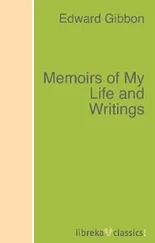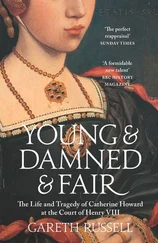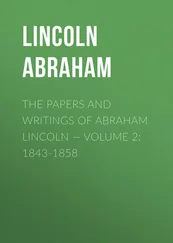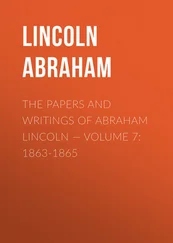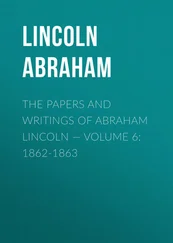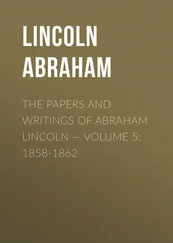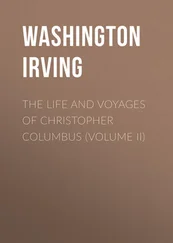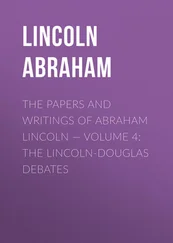Henry Fuseli - The Life and Writings of Henry Fuseli, Volume 3 (of 3)
Здесь есть возможность читать онлайн «Henry Fuseli - The Life and Writings of Henry Fuseli, Volume 3 (of 3)» — ознакомительный отрывок электронной книги совершенно бесплатно, а после прочтения отрывка купить полную версию. В некоторых случаях можно слушать аудио, скачать через торрент в формате fb2 и присутствует краткое содержание. Жанр: visual_arts, foreign_antique, foreign_prose, на английском языке. Описание произведения, (предисловие) а так же отзывы посетителей доступны на портале библиотеки ЛибКат.
- Название:The Life and Writings of Henry Fuseli, Volume 3 (of 3)
- Автор:
- Жанр:
- Год:неизвестен
- ISBN:нет данных
- Рейтинг книги:5 / 5. Голосов: 1
-
Избранное:Добавить в избранное
- Отзывы:
-
Ваша оценка:
- 100
- 1
- 2
- 3
- 4
- 5
The Life and Writings of Henry Fuseli, Volume 3 (of 3): краткое содержание, описание и аннотация
Предлагаем к чтению аннотацию, описание, краткое содержание или предисловие (зависит от того, что написал сам автор книги «The Life and Writings of Henry Fuseli, Volume 3 (of 3)»). Если вы не нашли необходимую информацию о книге — напишите в комментариях, мы постараемся отыскать её.
The Life and Writings of Henry Fuseli, Volume 3 (of 3) — читать онлайн ознакомительный отрывок
Ниже представлен текст книги, разбитый по страницам. Система сохранения места последней прочитанной страницы, позволяет с удобством читать онлайн бесплатно книгу «The Life and Writings of Henry Fuseli, Volume 3 (of 3)», без необходимости каждый раз заново искать на чём Вы остановились. Поставьте закладку, и сможете в любой момент перейти на страницу, на которой закончили чтение.
Интервал:
Закладка:
Henry Fuseli
The Life and Writings of Henry Fuseli, Volume 3 (of 3)
ELEVENTH LECTURE.
ON THE PREVAILING METHOD OF TREATING THE HISTORY OF PAINTING, WITH OBSERVATIONS ON THE PICTURE OF LIONARDO DA VINCI OF "THE LAST SUPPER."
In this Lecture I shall submit to your consideration some criticisms on the prevailing method of treating the History of our Art; attended by a series of observations on the magnificent picture of the Last Supper, by Lionardo da Vinci, now before you.
History, mindless of its real object, sinking to Biography, has been swelled into a diffuse catalogue of individuals, who, tutored by different schools, or picking something from the real establishers of Art, have done little more than repeat, or imitate through the medium of either, what those had found in Nature, discriminated, selected, and applied to Art, according to her dictates. Without wishing to depreciate the merit of that multitude who felt, proved themselves strong enough, and strenuously employed life to follow, it must be pronounced below the historian's dignity to allow them more than a transitory glance. Neither originality, nor selection and combination of materials scattered over the various classes of Art by others, have much right to attention from him who only investigates the real progress of Art, if the first proves to have added nothing essential to the system by novelty, and the second to have only diluted energy, and by a popular amalgama to have pleased the vulgar. Novelty, without enlarging the circle of knowledge, may delight or strike, but is nearer allied to whim than to invention; and an eclectic system, without equality of parts, as it originated in want of comprehension, totters on the brink of mediocrity.
The first ideas of Expression, Character, Form, Chiaroscuro, and Colour, originated in Tuscany: Masaccio, Lionardo da Vinci, M. Agnolo, Bartolomeo della Porta. The first was carried off before he could give more than hints of dramatic composition; the second appears to have established character on physiognomy, and to have seen the first vision of chiaroscuro, though he did not penetrate the full extent of its charm; the third had power, knowledge, and life sufficiently great, extensive, and long, to have fixed style on its basis, had not an irresistible bias drawn off his attention from the modesty and variety of Nature; Baccio gave amplitude to drapery, and colour to form.
Of the Tuscan School that succeeded these, the main body not only added nothing to their discoveries, but, if their blind attachment to the singularities rather than the beauties of the third be excepted, equally inattentive to expression, character, propriety of form, the charms of chiaroscuro, and energies of colour, contented themselves to give to tame or puerile ideas, obvious and common-place conceptions, a kind of importance by mastery of execution and a bold but monotonous and always mannered outline; and though Andrea del Sarto, with Francia Bigio, Giacopo da Pontormo, and Rosso, may be allowed to have thought sometimes for themselves and struck out paths of their own, will it be asserted that they enlarged or even filled the circle traced out before? The most characteristic work of Andrea's original powers, is, no doubt, the historic series in S. Giovanni dei Scalzi; yet, when compared with the patriarchal simplicity of the groups in the Lunette of the Sistine Chapel, the naïveté of his characters and imagery will be found too much tainted with contemporary, local, and domestic features, for Divine, Apostolic, and Oriental agents. His drapery, whenever he escapes from the costume of the day, combines with singular felicity the breadth of the Frati , and the acute angles of Albert Durer; but neither its amplitude, nor the solemn repose and tranquillity of his scenery, can supply the want of personal dignity, or consecrate vulgar forms and trivial features.
The Roman school like an Oriental sun rose, not announced by dawn, and, setting, left no twilight. Raffaello established his school on the Drama; its scenery, its expression, its forms; History, Lyrics, Portrait, became under his hand the organs of passion and character. With his demise the purity of this principle vanished. Julio Romano, too original to adopt, formed a school of his own at Mantoua, which, as it was founded on no characteristic principle, added nothing to Art, and did not long survive its founder. Polydoro Caldara was more ambitious to emulate the forms of the antique than to propagate the style of his master, which was not comprehended by Penny, called Il Fattore, mangled by Perrino del Vaga, became common-place in the hands of the Zuccari, barbarous manner during the usurpation of Giuseppe Cesari, sunk to tameness in the timid imitation of Sacchi and Maratta, and expired under the frigid method of Mengs.
A certain national, though original character, marks the brightest epoch of the Venetian School. However deviating from each other, Tiziano, Tintoretto, Jacopo da Ponte, and Paolo Veronese, acknowledge but one element of imitation, Nature herself: this principle each bequeathed to his school, and no attempt to adulterate its simplicity by uniting different methods, distinguishes their immediate successors: hence they preserved features of originality longer than the surrounding schools, whom the vain wish to connect incompatible excellence, soon degraded to mediocrity, and from that plunged to insignificance.
If what is finite could grasp infinity, the variety of Nature might be united by individual energy; till then the attempt to amalgamate her scattered beauties by the imbecility of Art, will prove abortive. Genius is the pupil of Nature; perceives, is dazzled, and imperfectly transmits one of her features: thus saw M. Agnolo, Raffaello, Tiziano, Correggio; and such were their technic legacies, as inseparable from their attendant flaws, as in equal degrees irreconcilable. That Nature is not subject to decrepitude, is proved by the superiority of modern over ancient science; what hinders modern Art to equal that of classic eras, is the effect of irremovable causes.
But I hasten to the principal object of this Lecture, the consideration of the technic character of Lionardo da Vinci, one, and in my opinion the first of the great restorers of modern Art, as deduced from his most important work, the Last Supper, surviving as a whole in the magnificent copy of Marco Uggione, rescued from a random pilgrimage by the courage and vigilance of our President, and by the Academy made our own. The original of this work, the ultimate test of his most vigorous powers, the proof of his theory, and what may be called with propriety the first characteristic composition since the revival of the Art, was the principal ornament of the Refectory in the Dominican Convent of S. Maria delle Gratie, at Milan.
Let us begin with the centre, the seat of the principal figure, from which all the rest emanate like rays. Sublimely calm, the face of the Saviour broods over the immense, whilst every face and every limb around him, roused by his mysterious word, fluctuate in restless curiosity and sympathetic pangs.
The face of the Saviour is an abyss of thought, and broods over the immense revolution in the economy of mankind, which throngs inwardly on his absorbed eye – as the spirit creative in the beginning over the water's darksome wave – undisturbed and quiet. It could not be lost in the copy before us: how could its sublime conception escape those who saw the original? It has survived the hand of Time in the study which Lionardo made in crayons, exhibited with most of the attendant heads in the British Gallery; and even in the feebler transcript of Del Testa.
I am not afraid of being under the necessity of retracting what I am going to advance, that neither during the splendid period immediately subsequent to Lionardo, nor in those which succeeded to our own time, has a face of the Redeemer been produced which, I will not say equalled, but approached the sublimity of Lionardo's conception, and in quiet and simple features of humanity embodied divine, or, what is the same, incomprehensible and infinite powers. To him who could contrive and give this combination, the unlimited praise lavished on the inferior characters who surround the hero, whilst his success in that was doubted – appears to me not only no praise, but a gross injustice.
Читать дальшеИнтервал:
Закладка:
Похожие книги на «The Life and Writings of Henry Fuseli, Volume 3 (of 3)»
Представляем Вашему вниманию похожие книги на «The Life and Writings of Henry Fuseli, Volume 3 (of 3)» списком для выбора. Мы отобрали схожую по названию и смыслу литературу в надежде предоставить читателям больше вариантов отыскать новые, интересные, ещё непрочитанные произведения.
Обсуждение, отзывы о книге «The Life and Writings of Henry Fuseli, Volume 3 (of 3)» и просто собственные мнения читателей. Оставьте ваши комментарии, напишите, что Вы думаете о произведении, его смысле или главных героях. Укажите что конкретно понравилось, а что нет, и почему Вы так считаете.

